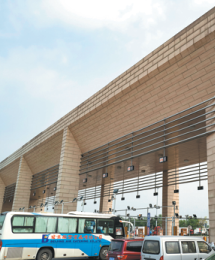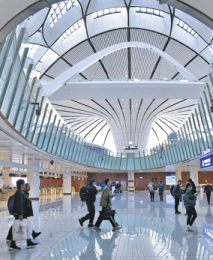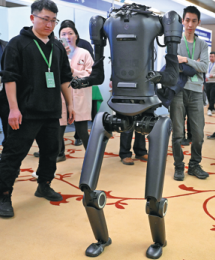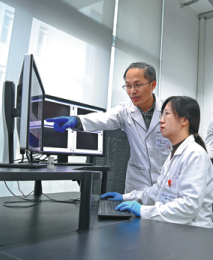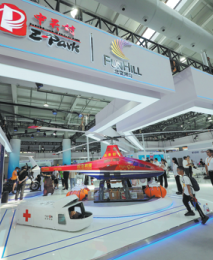Capital's districts reveal distinctive implementation plans

Beijing's districts of Shunyi, Daxing, Changping, Fangshan, and the Beijing Economic-Technological Development Area, which are integral parts of the New City on the Plain initiative, have recently revealed their respective implementation plans (2025-30).
Each plan highlights its respective strengths to create differentiated key industrial zones, which are pivotal in driving high-quality development and establishing a modern industrial system within the designated areas.
In Shunyi, the focus is on internationalization, with an emphasis on developing an advanced airport economy zone. The goal is to transform the Capital International Airport's economic zone into a world-class aviation hub.
This involves ongoing reforms of the airport management system; renovations and upgrades to the T3 terminal; the addition of flight routes to countries and regions participating in the Belt and Road Initiative; and more flights to Europe and the United States.
Moreover, the district will expand the scale of airport-related industries, and foster growth momentum by building an industry system centered on aviation services and supported by pharmaceutical health, airport-based smart manufacturing, logistics trade, and business consumption.
By leveraging an international perspective to enhance quality and drive technological innovation, Shunyi seeks to propel high-end manufacturing industries, such as new energy smart vehicles, aerospace, third-generation semiconductors, intelligent equipment, and pharmaceutical health to new heights.
The goal is to significantly elevate the quality and efficiency of modern service industries, including aviation services, business exhibitions, industrial finance, and technology services.
Daxing's plan emphasizes openness and reform, focused on building a demonstration area for coordinated development.
Leveraging the resources of Daxing International Airport, the district aims to strengthen industry chains through regional coordinated development and the transformation of sci-tech achievements. This includes expanding industrial collaboration spaces and improving development ecosystems.
The district also plans to enhance collaborative efforts among medical, research, and educational institutions to bolster life sciences and future energy sources, positioning Daxing as a hub for high-end industries in southern Beijing.
By 2030, the sci-tech service industry in Daxing is expected to experience rapid growth, with enhanced technological innovation capabilities, a significant increase in high-level patents and incubation institutions. Additionally, the international and regional passenger throughput and air cargo throughput at the airport are projected to double.
The Beijing Economic-Technological Development Area, or Beijing E-Town, underscores its leadership in industrial innovation, focusing on constructing a model area for new quality productive forces and high-end industries.
It aims to allocate more resources to nurture industrial clusters such as next-generation information technology, new energy intelligent connected vehicles, pharmaceuticals and healthcare, robotics and high-end equipment.
Beijing E-Town will expedite the integration of the digital sector and real economy by leveraging the advantages of the entire industry chain from basic technology to core products and application scenarios.
It is also committed to establishing a demonstration area for the high-quality development of manufacturing and modern services, exploring effective mechanisms for integrating culture and technology, focusing on high-tech audiovisual industries and esports, and supporting emerging industries like the metaverse.
Changping emphasizes building a vibrant area for technological innovation and integration between education and industries. It will continue to advance the construction of the Future Science City, and improve the advanced energy industry development system and supporting infrastructure.
Leveraging its technological innovation advantages and the clustering of key enterprises, the district aims to accelerate the introduction and implementation of major industrial projects, enhancing the level of advanced manufacturing sectors.
Based on the city's overall planning and Changping's innovative resource advantages, the district will cultivate more future industries in fields such as information technology, life sciences, and advanced manufacturing, with a focus on accelerating the development of 6G technology, biomanufacturing, and robotics.
Regarding the integration between education and industries, Changping will focus on the Shahe Higher Education Park, Tsinghua University's national key laboratory base, and Peking University's Changping campus to accelerate the integrated development of industry, academia, and research, promoting industrial transformation.
Fangshan's plan highlights the establishment of a major platform for safety and emergency response, the creation of a cultural district integrating education and industry, and the development of a new area for high-end intelligent manufacturing.
With Liangxiang University Town as its centerpiece, the district will initiate the construction of Beijing Institute of Technology's national innovation platform cluster, and utilize 89 key laboratories at the provincial and ministerial levels.
Leveraging the innovative capabilities of the university town, Fangshan plans to establish a green energy and new materials industrial base that leads the nation, along with an advanced manufacturing base that gathers high-end and sophisticated sectors.
Furthermore, the district will continuously strengthen the intelligent manufacturing industry chain and cultivate a batch of key enterprises specializing in intelligent emergency equipment and modern transportation.
